Abstract
Daily and hourly variations in microbial indicators densities in the beach-waters of Hong Kong have been described. The levels of Escherichia coli at a number of beaches was observed to be influenced by tide, and for staphylococci, by bather numbers. The tidal influence was most obvious during spring tides; and for the effect of bathers, during neap tides. Both organisms are present in high densities in external sources of faecal pollution of bathing beaches, with the average staphylococci to E. coli ratios being 0.04-3. Staphylococci may serve as an indicator of bather density and the risk of cross-infection amongst bathers (rather than as another indicator of faecal contamination) when the average staphylococci to E. coli ratio for a bathing beach is considerably higher than 3. The variability of microbial indicator densities means the routine sampling of bathing beaches should be carried out on weekend days with maximum numbers of swimmers exposed to the water, and spread throughout the bathing season.
Full text
PDF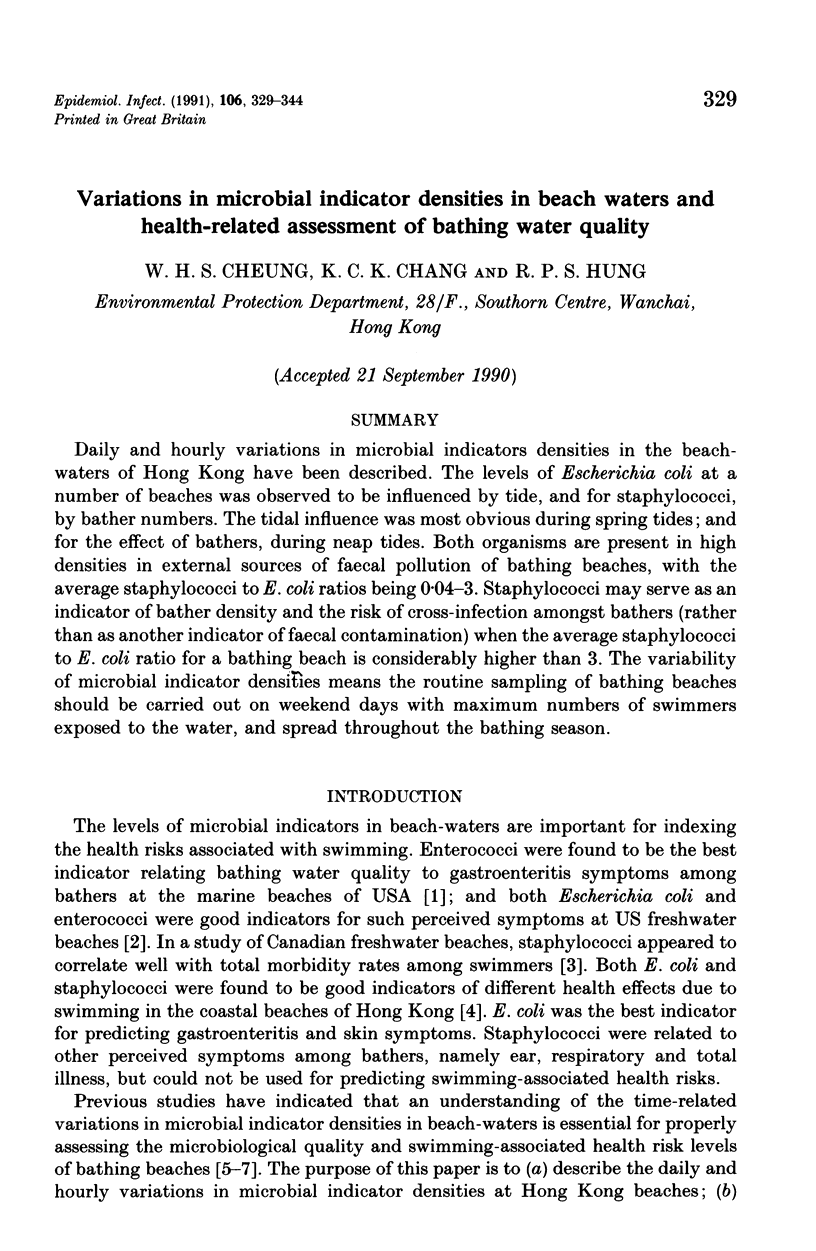
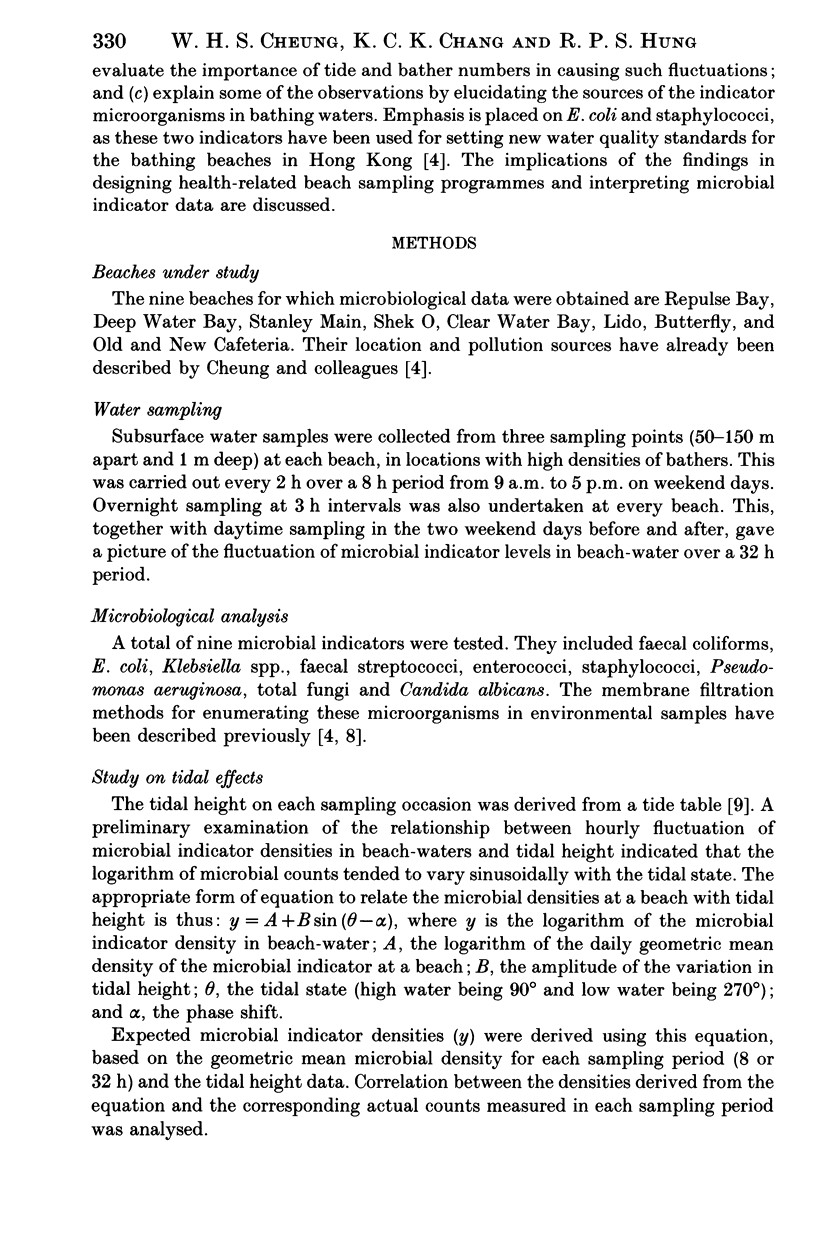
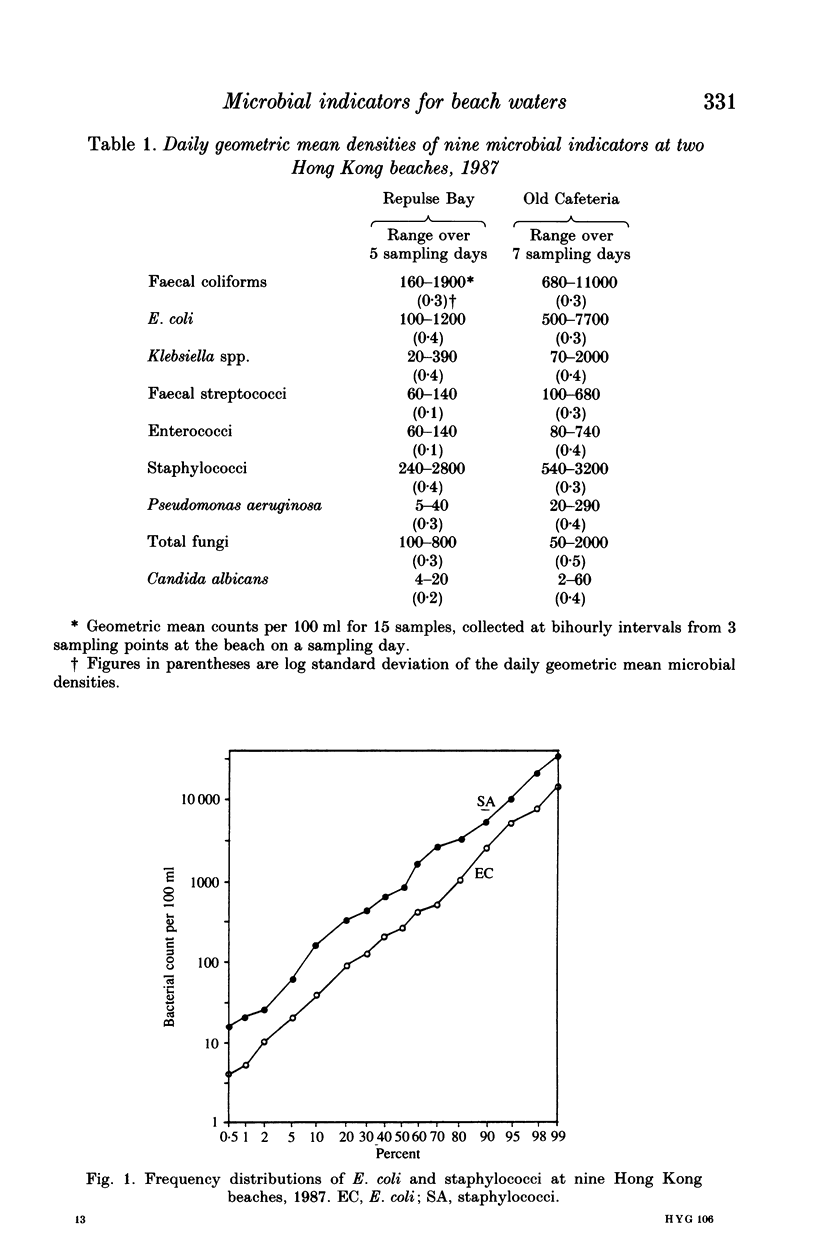
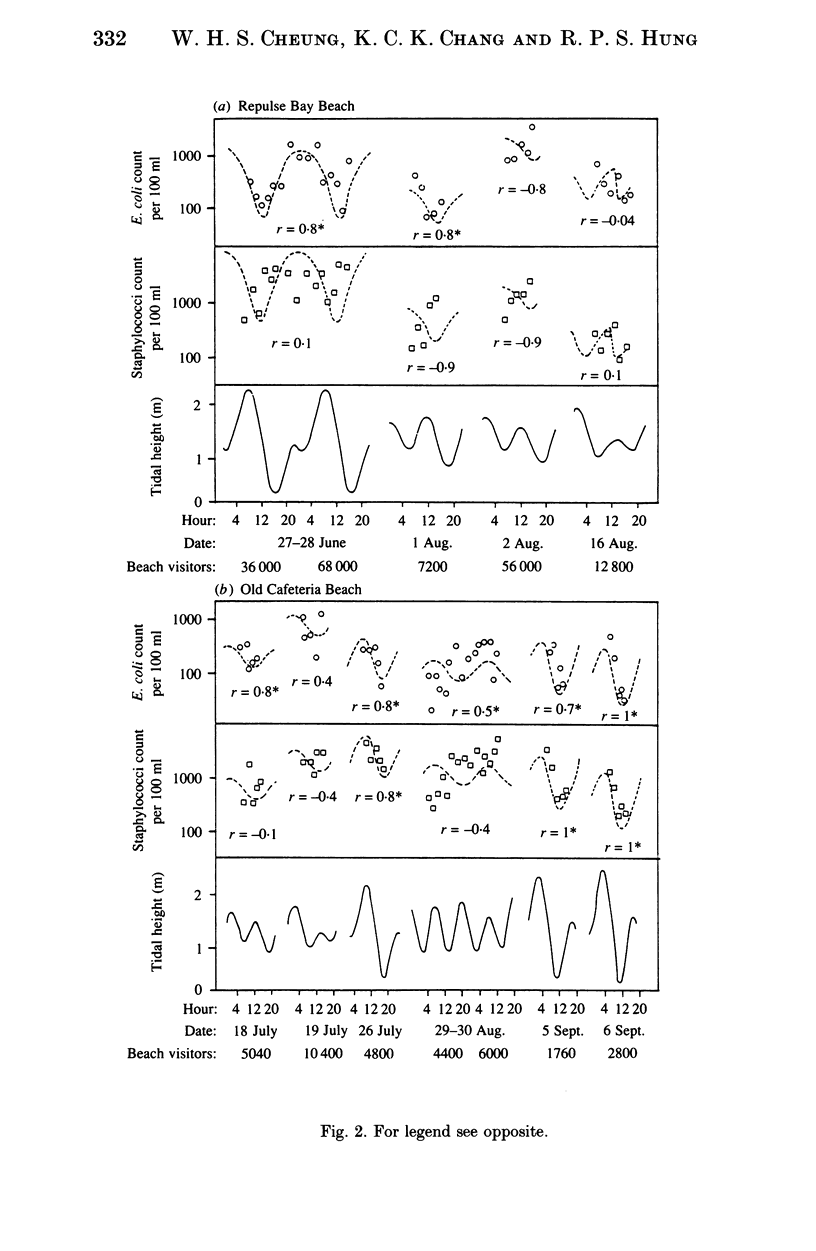
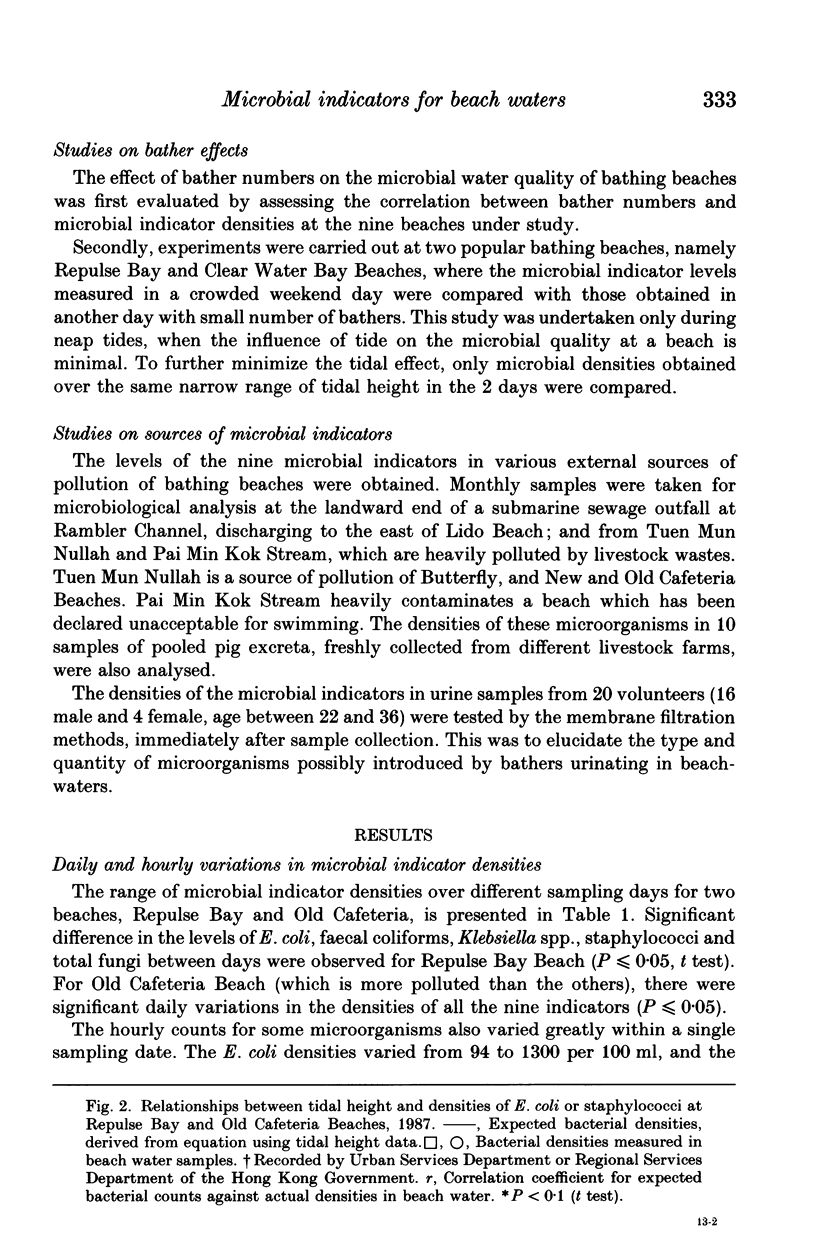
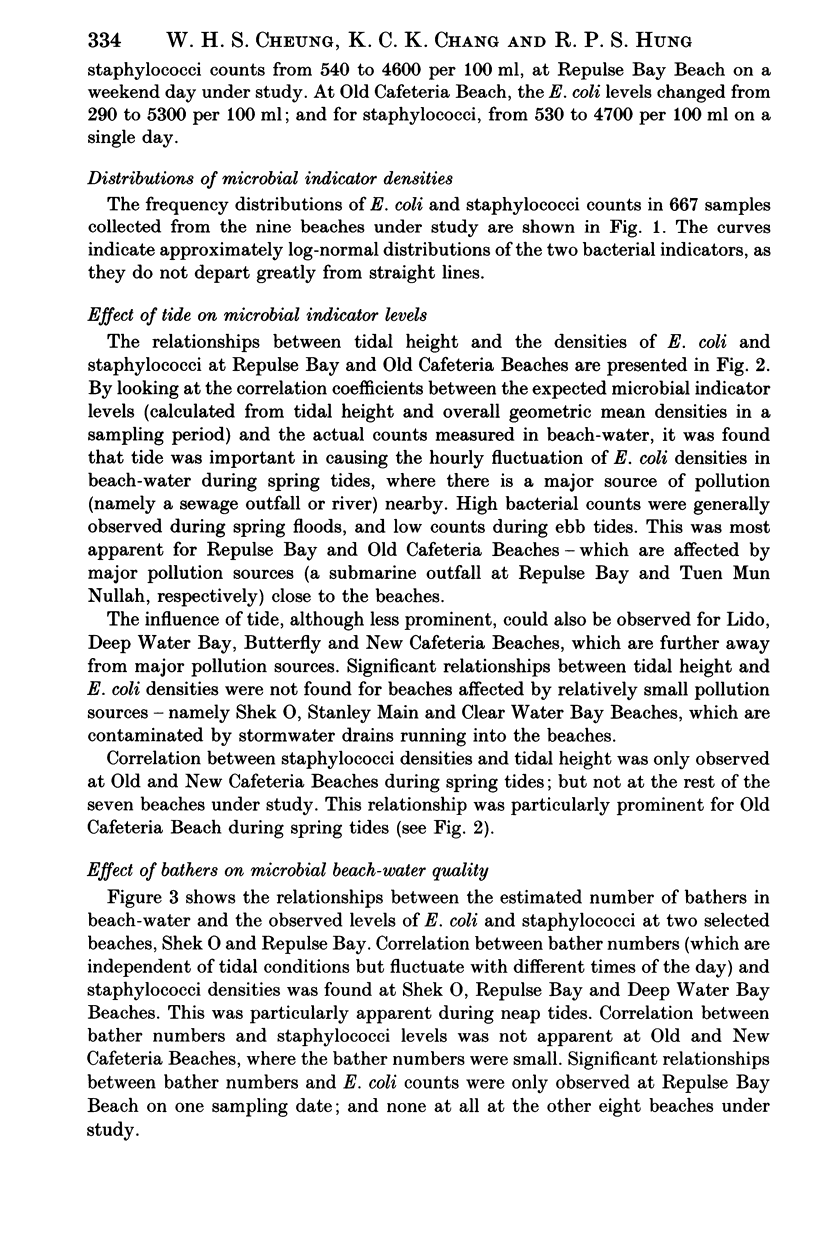
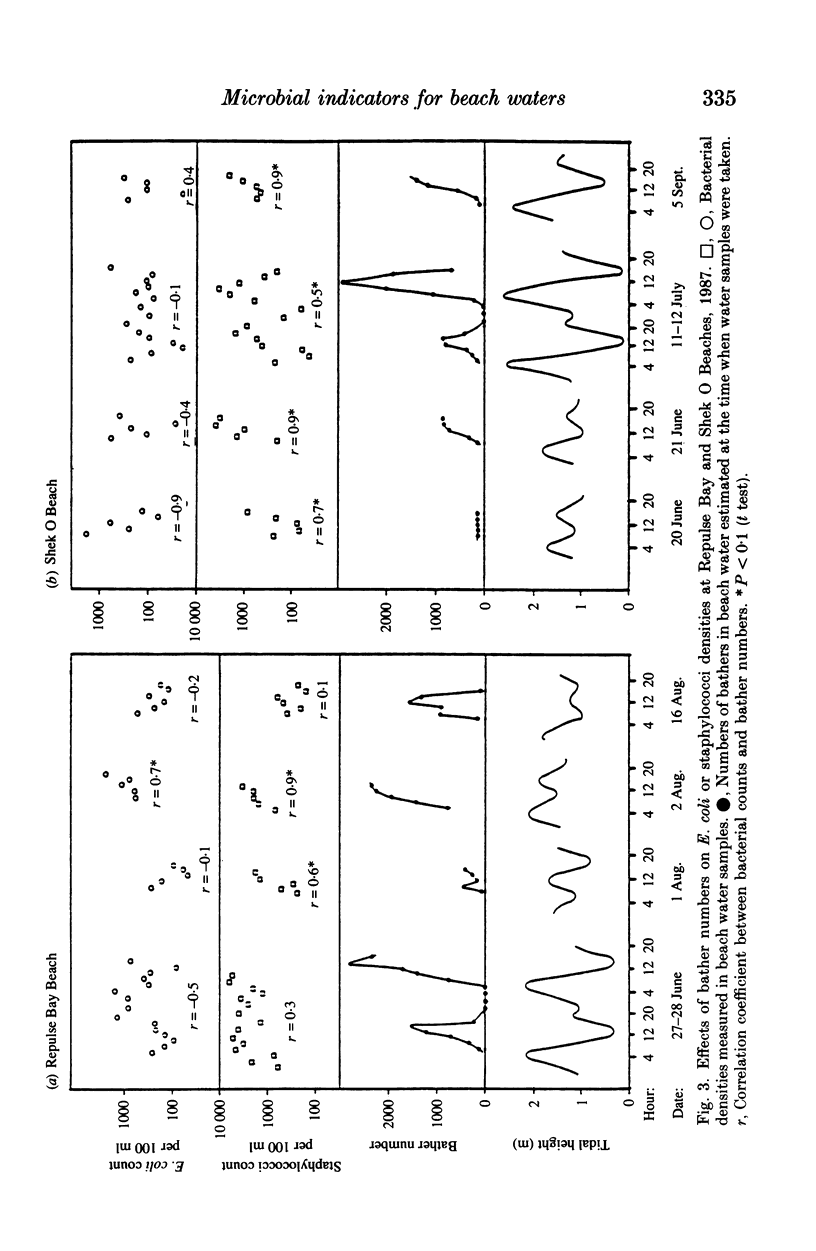
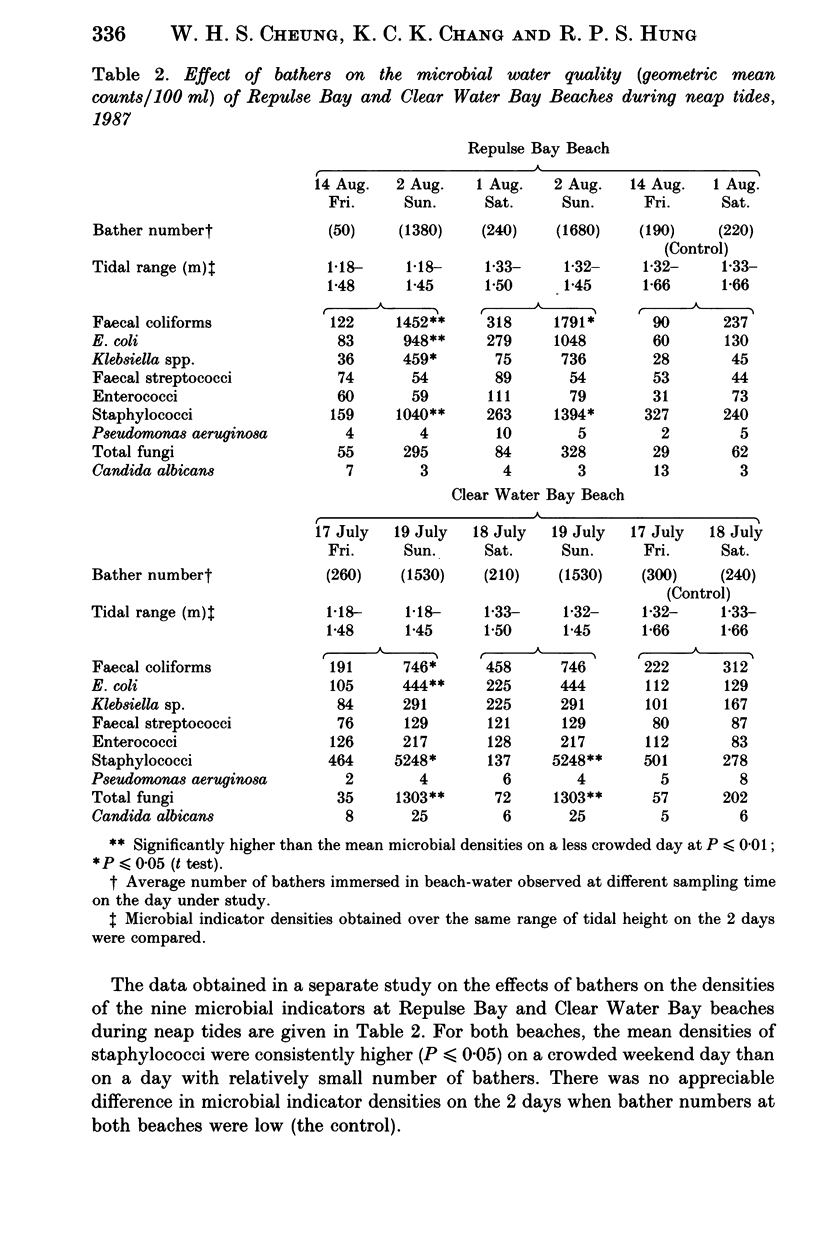
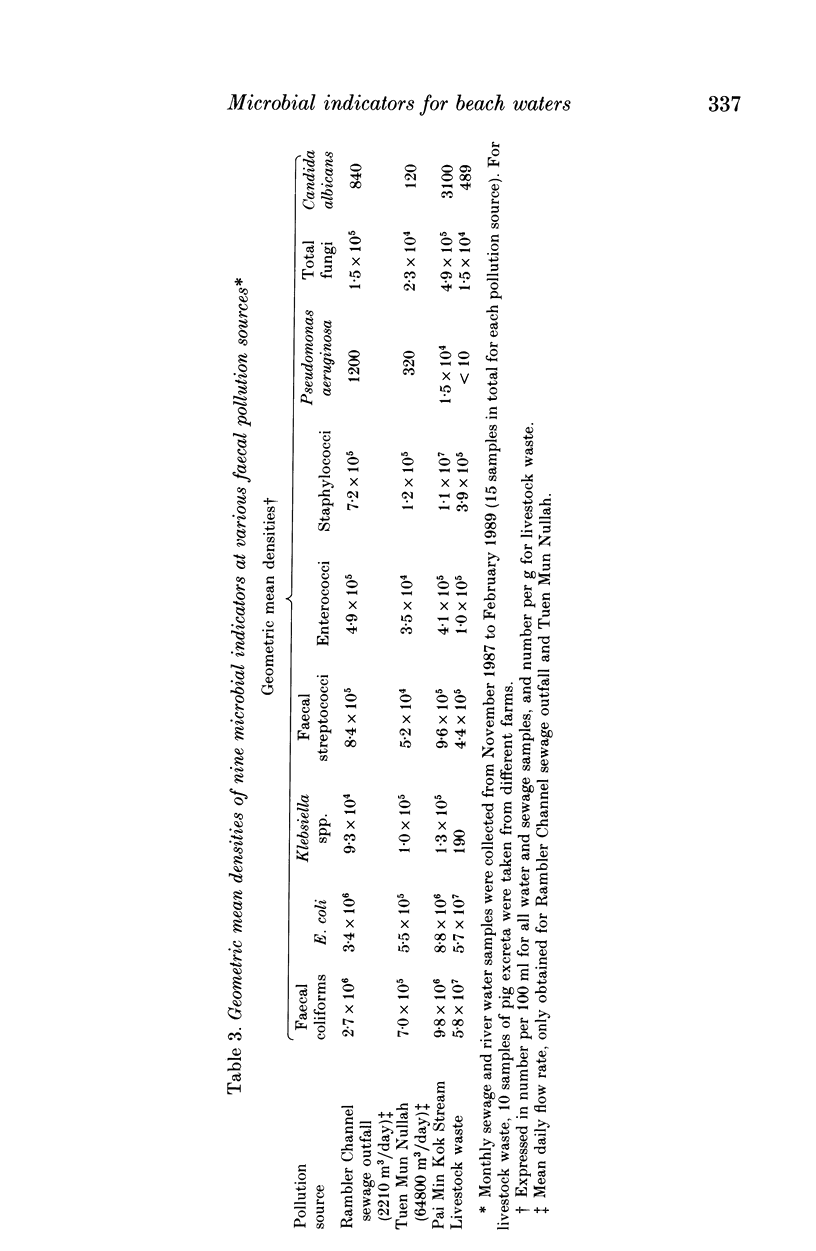
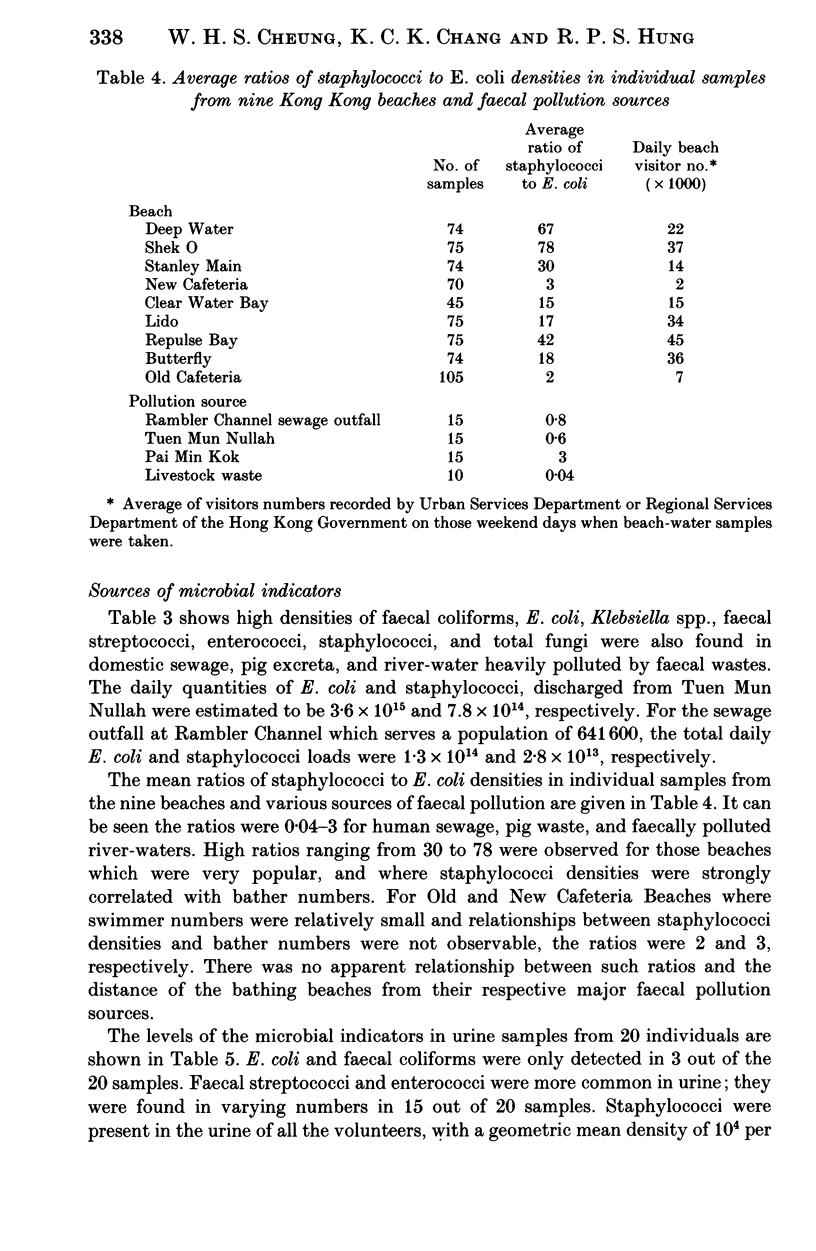
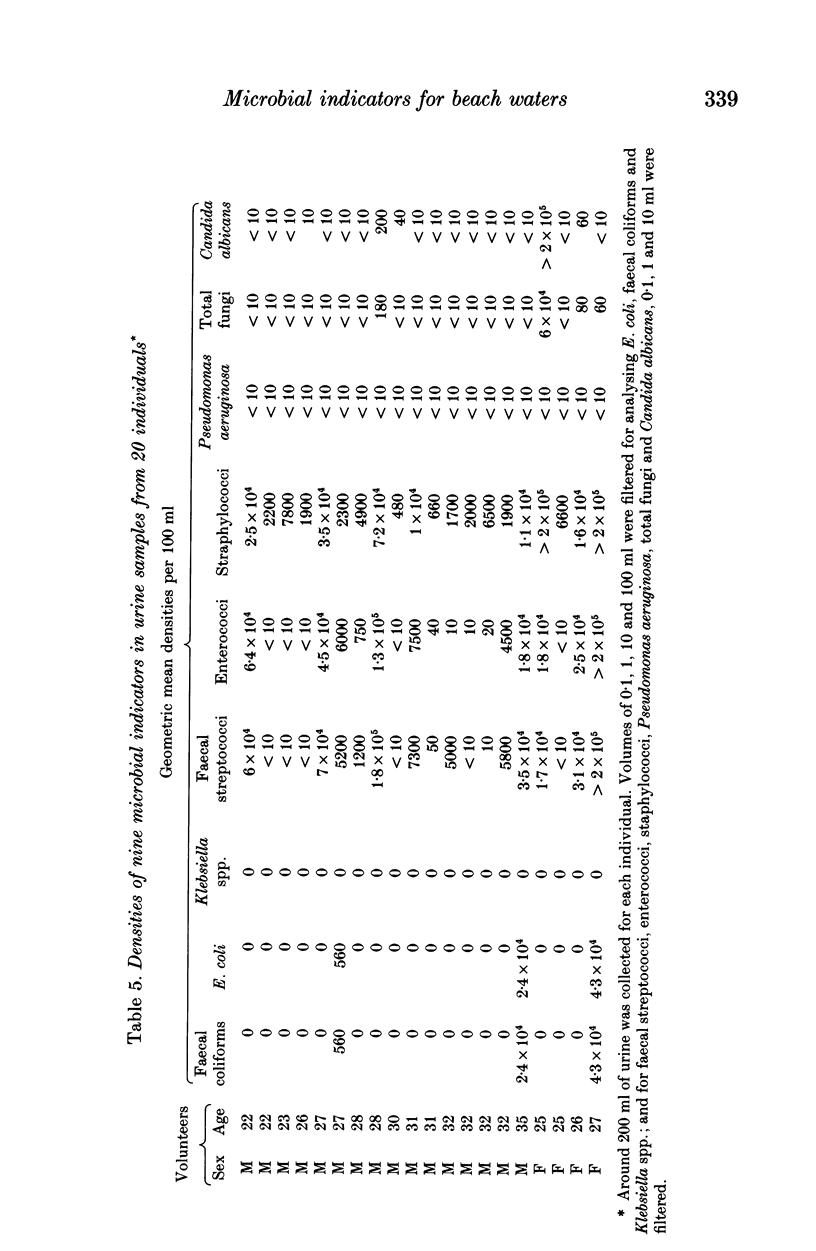
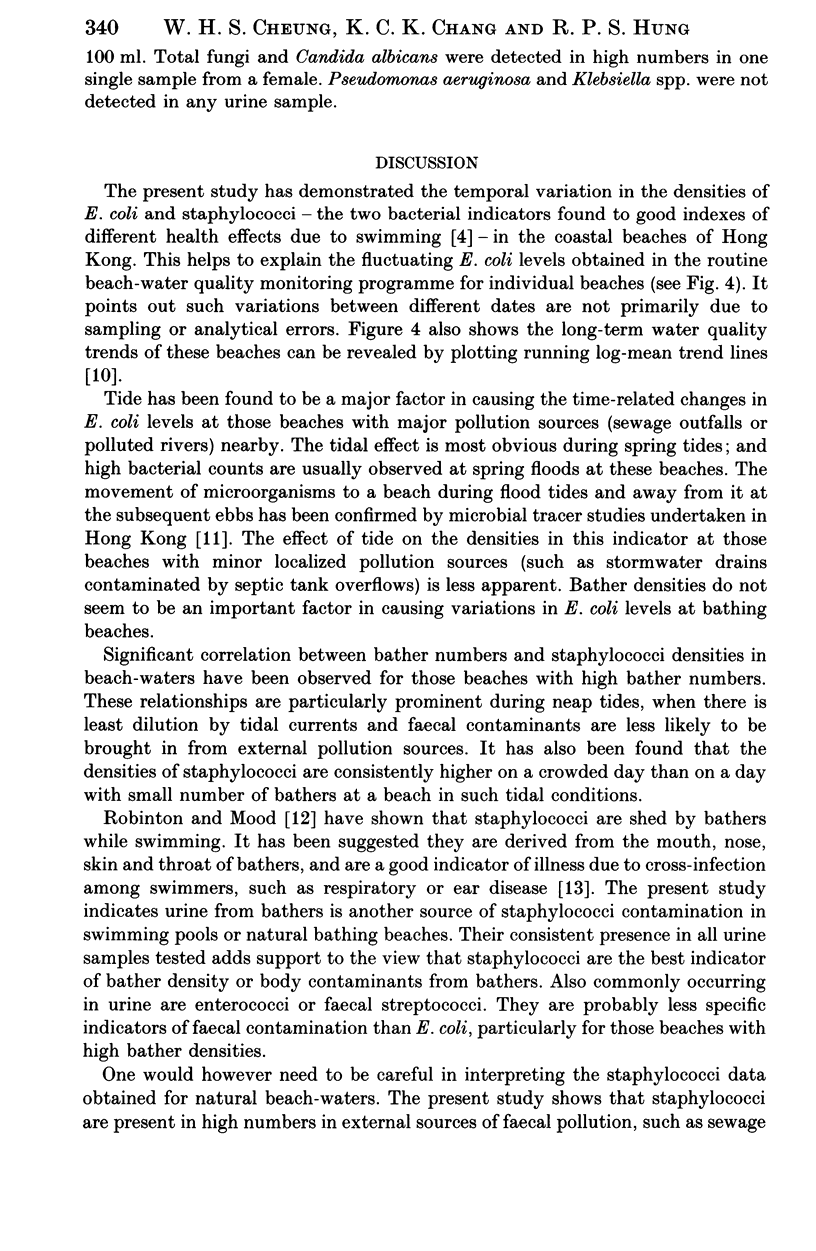
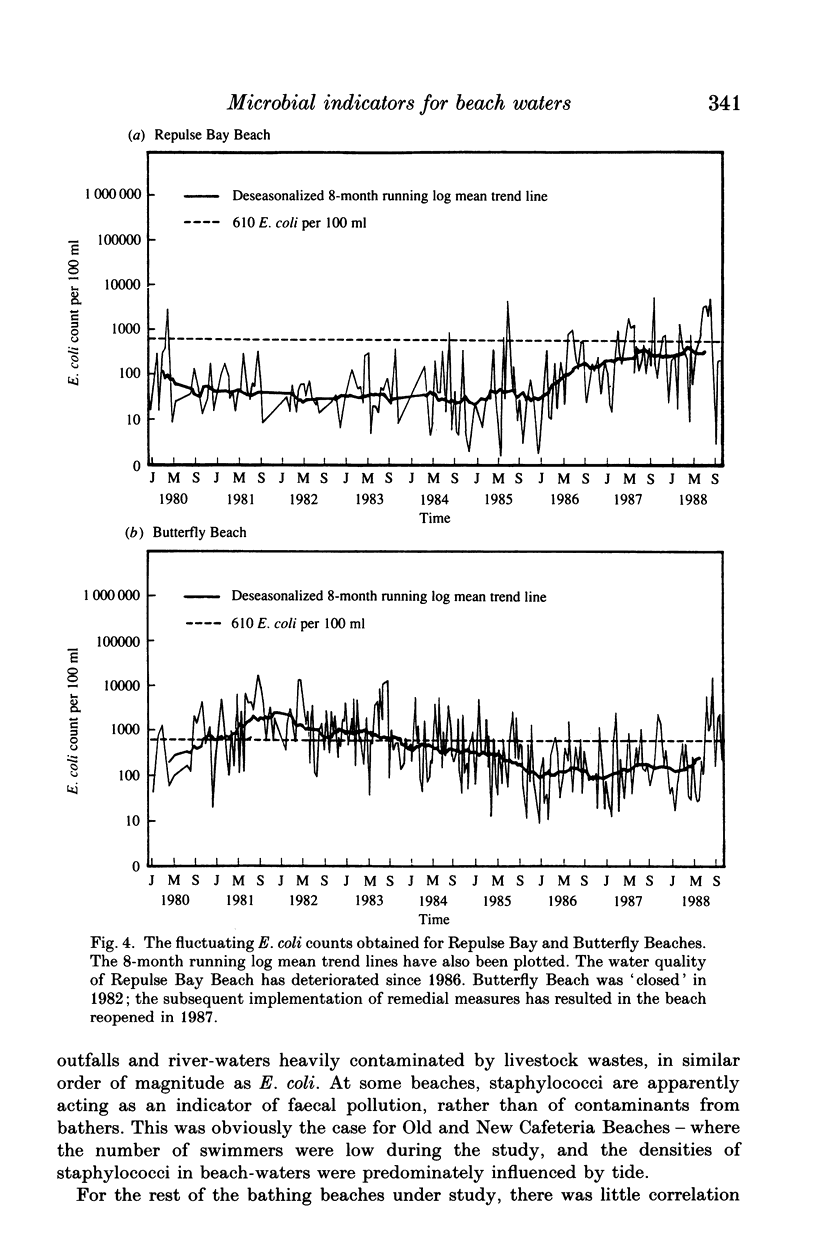
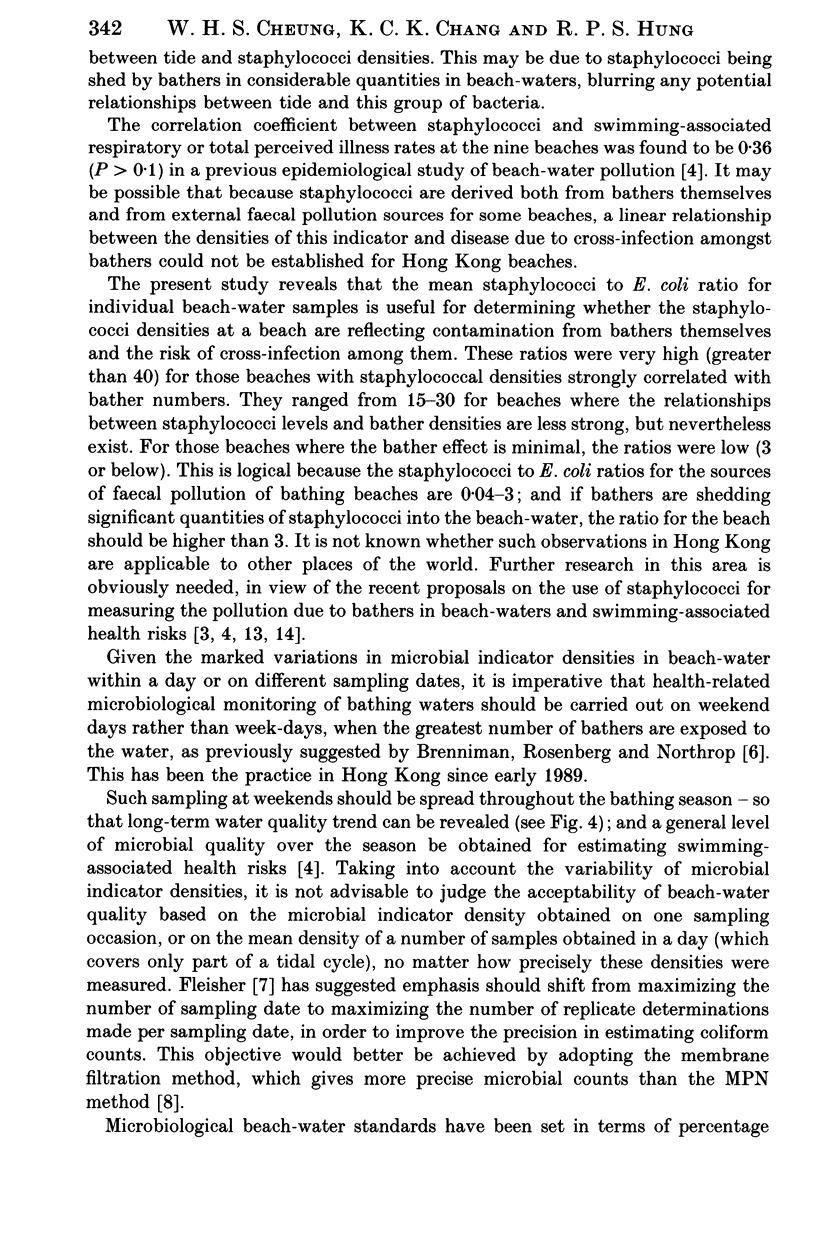
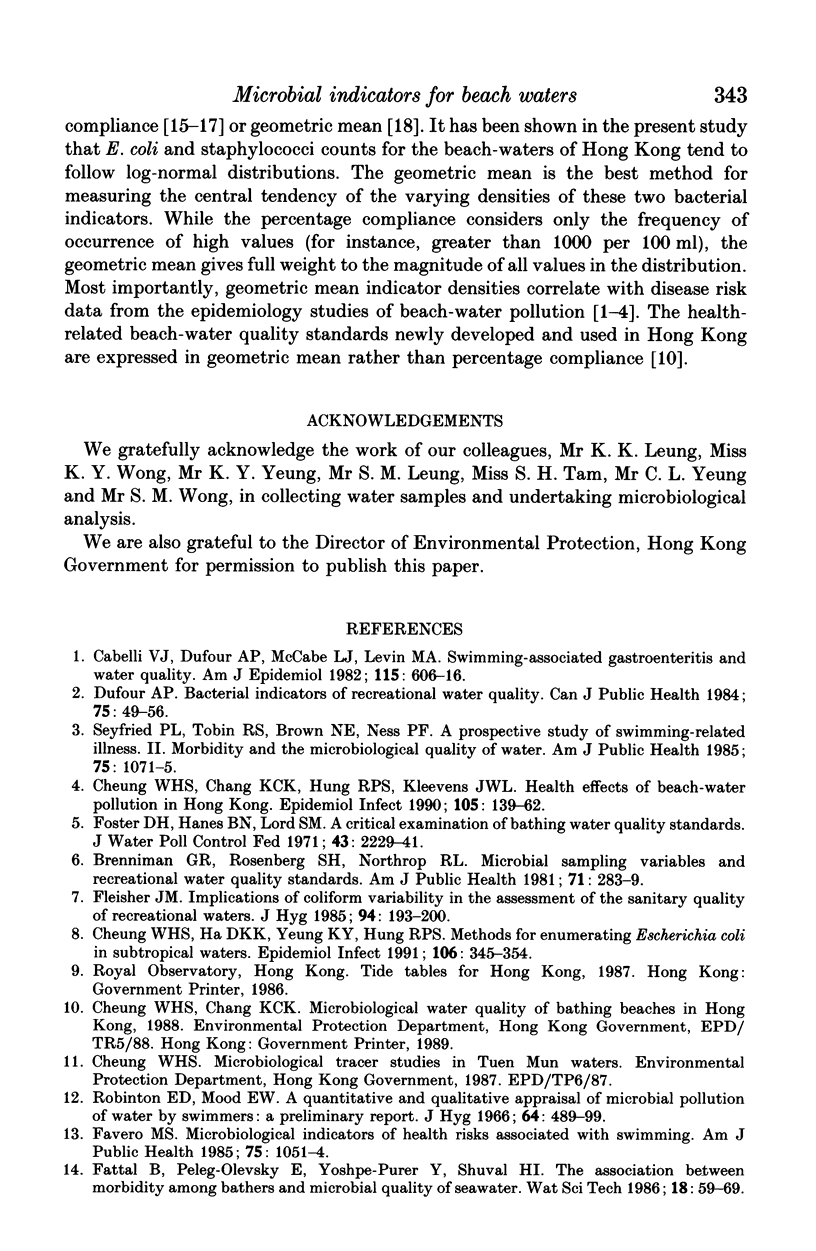
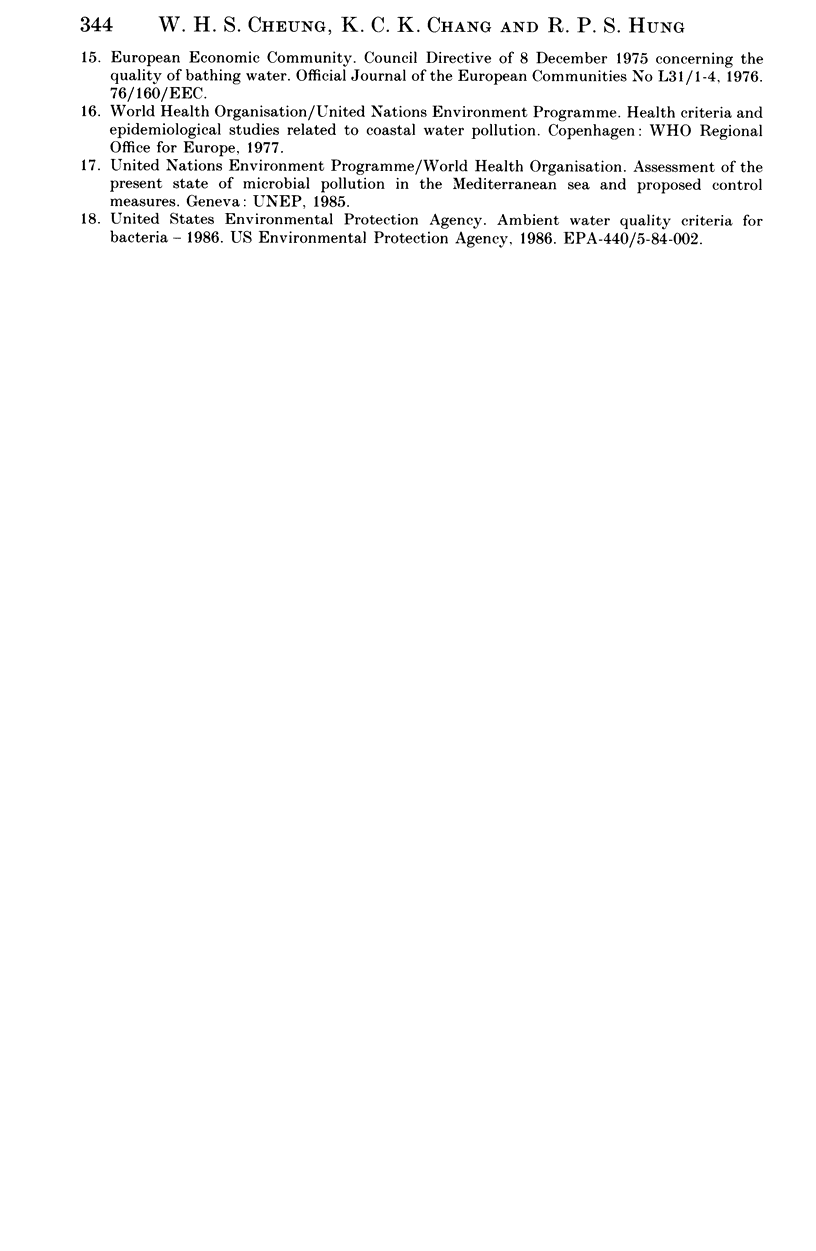
Selected References
These references are in PubMed. This may not be the complete list of references from this article.
- Brenniman G. R., Rosenberg S. H., Northrop R. L. Microbial sampling variables and recreational water quality standards. Am J Public Health. 1981 Mar;71(3):283–289. doi: 10.2105/ajph.71.3.283. [DOI] [PMC free article] [PubMed] [Google Scholar]
- Cabelli V. J., Dufour A. P., McCabe L. J., Levin M. A. Swimming-associated gastroenteritis and water quality. Am J Epidemiol. 1982 Apr;115(4):606–616. doi: 10.1093/oxfordjournals.aje.a113342. [DOI] [PubMed] [Google Scholar]
- Cheung W. H., Chang K. C., Hung R. P., Kleevens J. W. Health effects of beach water pollution in Hong Kong. Epidemiol Infect. 1990 Aug;105(1):139–162. doi: 10.1017/s0950268800047737. [DOI] [PMC free article] [PubMed] [Google Scholar]
- Cheung W. H., Ha D. K., Yeung K. Y., Hung R. P. Methods for enumerating Escherichia coli in subtropical waters. Epidemiol Infect. 1991 Apr;106(2):345–354. doi: 10.1017/s0950268800048494. [DOI] [PMC free article] [PubMed] [Google Scholar]
- Dufour A. P. Bacterial indicators of recreational water quality. Can J Public Health. 1984 Jan-Feb;75(1):49–56. [PubMed] [Google Scholar]
- Favero M. S. Microbiologic indicators of health risks associated with swimming. Am J Public Health. 1985 Sep;75(9):1051–1054. doi: 10.2105/ajph.75.9.1051. [DOI] [PMC free article] [PubMed] [Google Scholar]
- Fleisher J. M. Implications of coliform variability in the assessment of the sanitary quality of recreational waters. J Hyg (Lond) 1985 Apr;94(2):193–200. doi: 10.1017/s0022172400061398. [DOI] [PMC free article] [PubMed] [Google Scholar]
- Foster D. H., Hanes N. B., Lord S. M., Jr A critical examination of bathing water quality standards. J Water Pollut Control Fed. 1971 Nov;43(11):2229–2241. [PubMed] [Google Scholar]
- Robinton E. D., Mood E. W. A quantitative and qualitative appraisal of microbial pollution of water by swimmers: a preliminary report. J Hyg (Lond) 1966 Dec;64(4):489–499. doi: 10.1017/s0022172400040808. [DOI] [PMC free article] [PubMed] [Google Scholar]
- Seyfried P. L., Tobin R. S., Brown N. E., Ness P. F. A prospective study of swimming-related illness. II. Morbidity and the microbiological quality of water. Am J Public Health. 1985 Sep;75(9):1071–1075. doi: 10.2105/ajph.75.9.1071. [DOI] [PMC free article] [PubMed] [Google Scholar]


